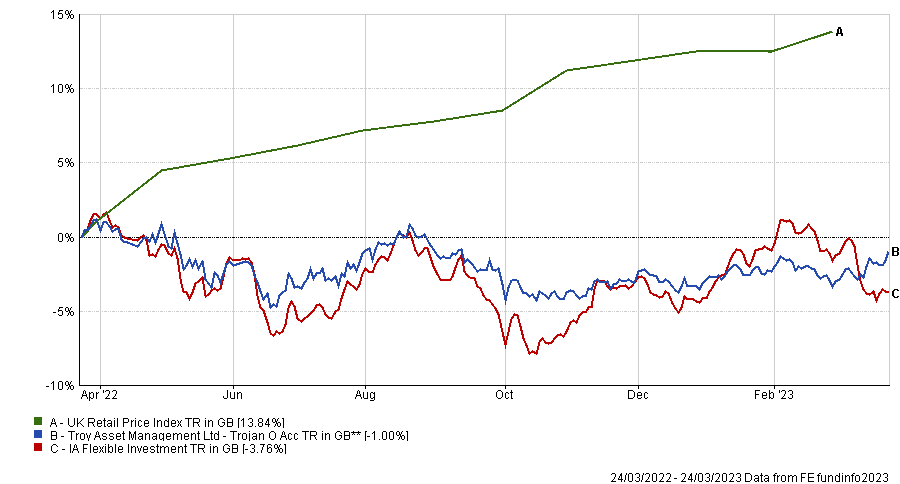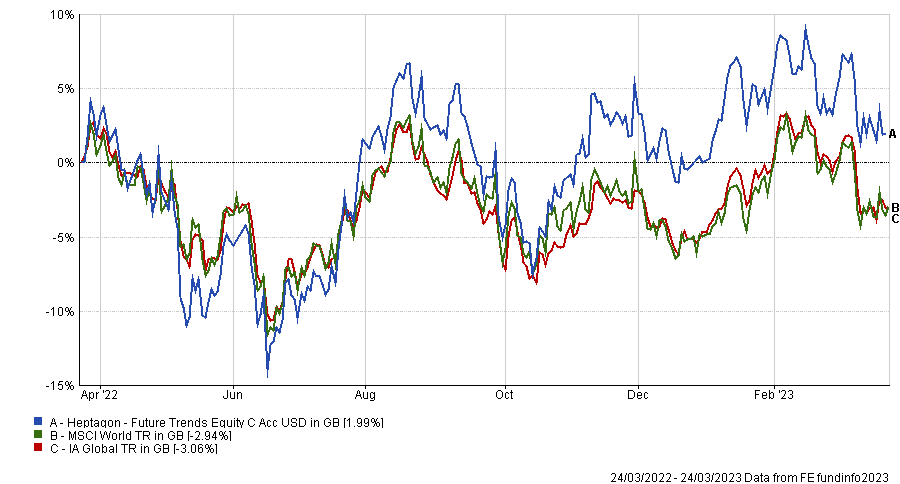Investors have less than seven days left to make use of their ISA allowance for this financial year before losing it on 5 April.
The scheme allows to invest up to £20,000 tax-free each year and investors should use much of it as they can reasonably manage, said Myron Jobson, senior personal finance analyst at interactive investor. His advice was to make the most of it and, if undecided about where and when to invest, leave it in cash and think about it later.
“If you’re worried about the markets, you can always secure this year's allowance with cash now and take your time choosing when to invest your cash. There is no charge to do so, and it can potentially be more diligent in selecting investment opportunities. You can also drip-feed it into the market if you wish,” he said.
Below, experts have selected three options for investors who are looking for a fund that will do well as a core option in their ISA, so that they can put their money to work immediately.
Nick Wood, head of fund research at Quilter Cheviot picked the £6.4bn FE fundinfo five-crown Trojan fund run by FE fundinfo Alpha Manager Sebastian Lyon, which he said is “one to consider for the more cautious investor who may just want a one-stop shop”.
“It gives cautious investors everything they could want from a fund, investing across equity, fixed income, cash and cash equivalents and gold,” he said.
“It is also a well-established fund as it has been going since 2001 and returned 26% over the past five years, with a focus on protecting in a down market. This is aided by the fund investing in high-quality companies within the equity sleeve.”
Performance of fund over 1yr against sector and index

Source: FE Analytics
In 2022, a very difficult year for multi-asset investors, the fund made a small loss of 3.8%, which is “very respectable, given the weak performance across even defensive asset classes”, Wood said.
“The team are willing to shift allocation significantly as the opportunity presents itself, but today have around 22% in equities and 36% in US Treasury inflation-protected securities, 26% in short-dated UK and US bonds, 11% in gold and the remainder in cash.”
Jason Hollands, managing director at Bestinvest, chose F&C Investment Trust, the oldest collective investment vehicle, launched in 1868 to provide “the investor of moderate means the same advantage as the large capitalist”.
“Its approach has unsurprisingly evolved over the past 156 years. A good all-rounder, it continues to provide small investors with exposure to a highly diversified set of opportunities across the globe and is a trust I personally have invested in for my children,” Hollands said.
Performance of fund over 1yr against sector and index

Source: FE Analytics
The manager Paul Niven acts as asset allocator and investment strategist, with regional sub-portfolios delegated to both internal teams and external managers such as Barrow Hanley and T Rowe Price for US equities, which allows for “a partial multi-manager approach”.
The underlying portfolio provides exposure to a highly diversified portfolio of more than 400 companies from both developed and emerging markets, including a 10% allocation to private equity funds.
“While F&C rarely blows the lights out in any individual year compared to racier rivals like Scottish Mortgage, it has delivered strong performance over the long term without taking a strong style bias. When combined with the incredibly diversified approach, makes this a great one-stop shop for the small investor,” Hollands concluded.
The last pick is Heptagon Future Equity, which, according to Andy Merricks, fund manager at 8AM Global, is “a good ISA pick to tuck away for a few years”.
“I've always liked the fund and that holds up quite well,” he said “It is a stock-picking fund run by Alex Gunz, and one that you can stick in an ISA and ultimately, it'll do well for you.”
Performance of fund over 1yr against sector and index

Source: FE Analytics
The fund’s largest overweights compared to its benchmark, the MSCI World NR USD index, are information technology (34.4% against 21.3%), real estate (9.8% against 2.6%) and healthcare (16.6% against 13.3%). On the other hand, it is underweight in financials, communication services and utilities (no exposure at all versus the 14.6%, 6.6% and 2.9% of the index, respectively).
“The fund is investing in the future, and I always say that's a good thing,” said Merricks. “It might not be the best performer every year, but it won't be the worst by long way.”




